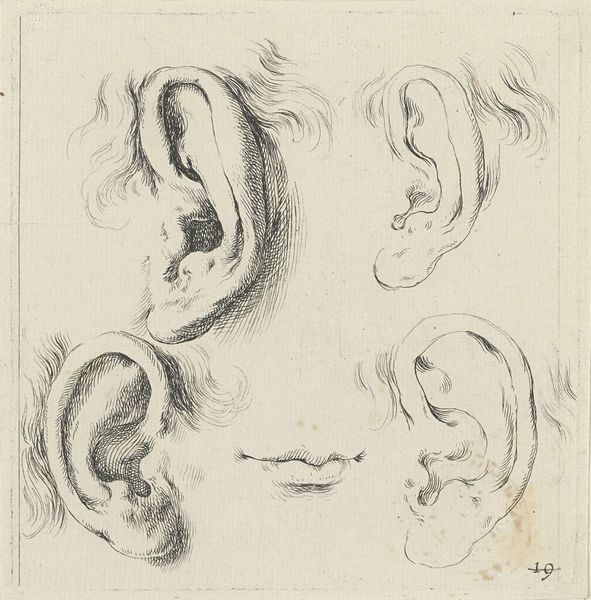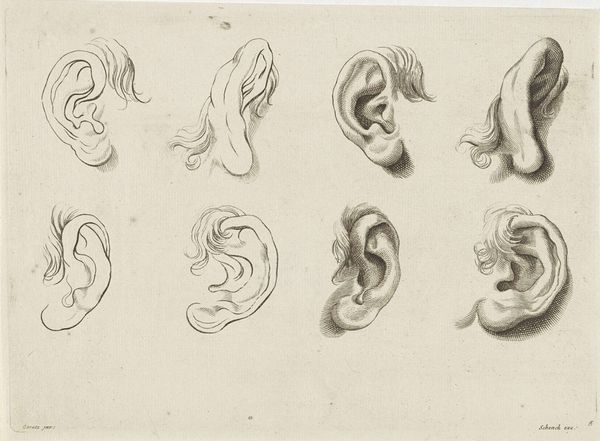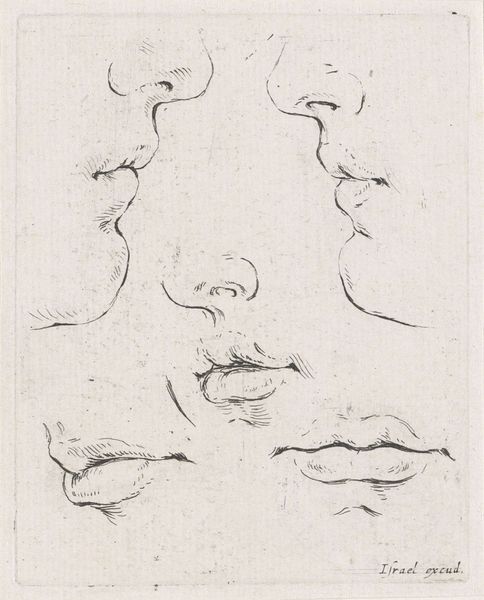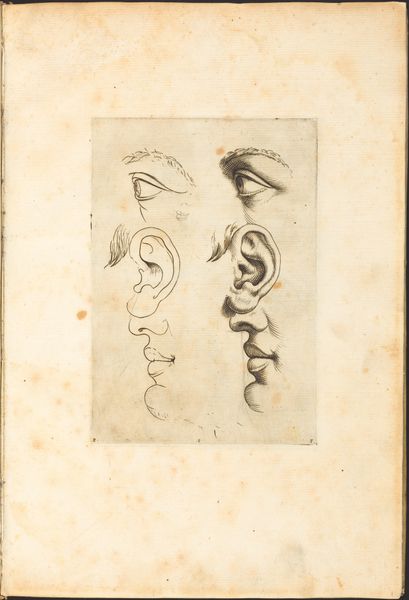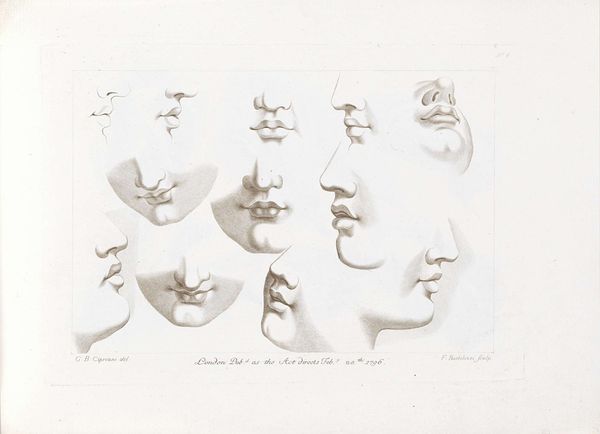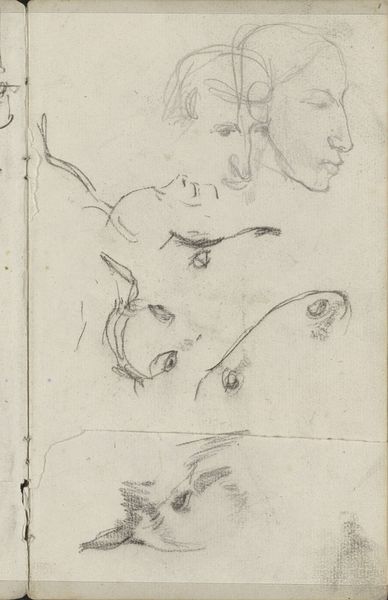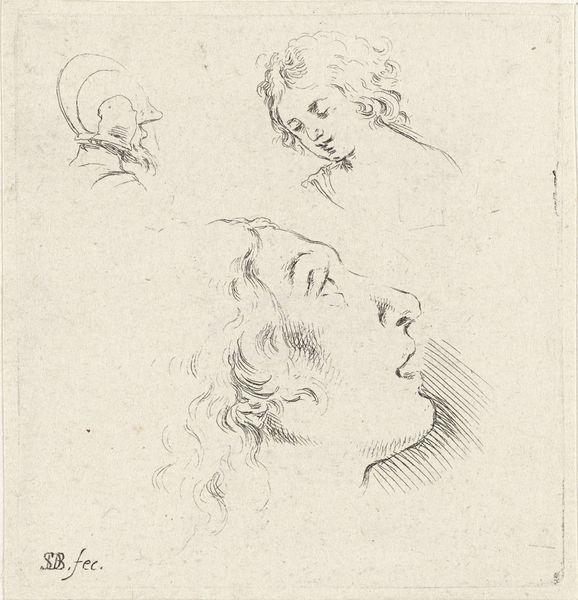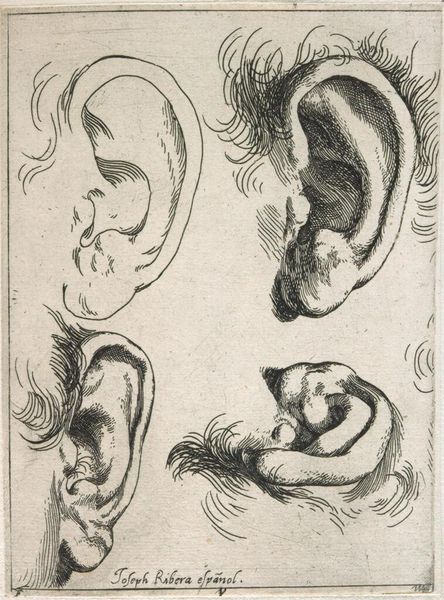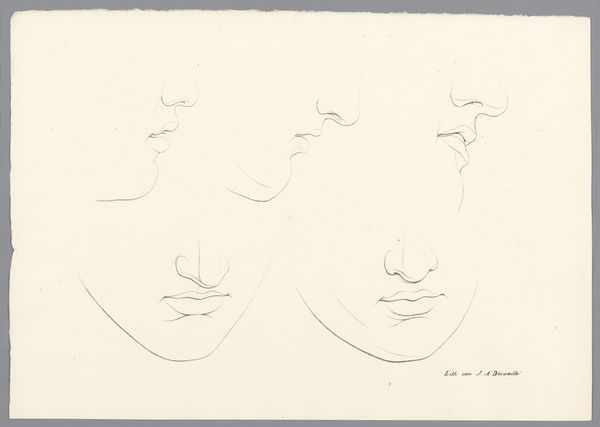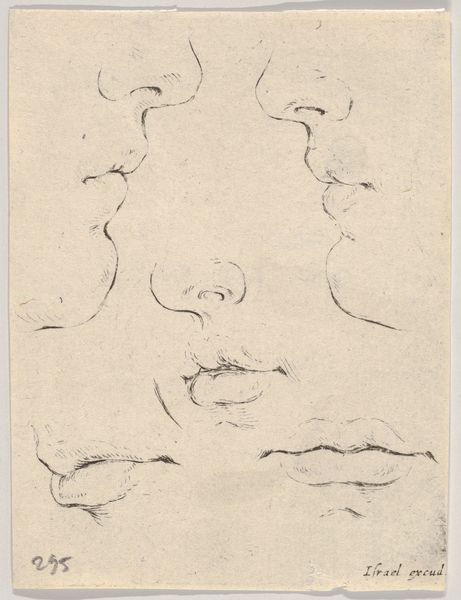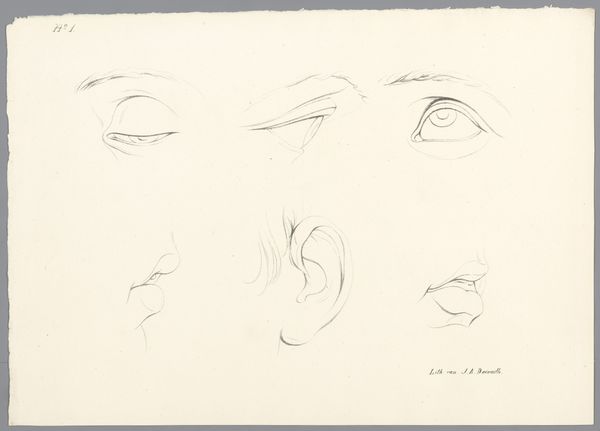
drawing, pencil
#
portrait
#
pencil drawn
#
drawing
#
baroque
#
pencil sketch
#
pencil drawing
#
pencil
#
academic-art
Dimensions: height 125 mm, width 157 mm
Copyright: Rijks Museum: Open Domain
Curator: Welcome. Here we have "Three Ears, a Mouth and a Profile of a Nose and Mouth," a drawing by Stefano della Bella, created sometime between 1620 and 1664. It is currently held at the Rijksmuseum. Editor: Intriguing. There’s an almost clinical detachment in this rendering. The lines are precise, almost surgical in their clarity, emphasizing the stark whiteness of the paper. Curator: Yes, consider that such academic studies were critical components of artistic training during the Baroque period. These types of drawings focused on mastering anatomy and form, the foundations of figurative representation that upheld societal norms of beauty and class distinctions. Editor: True, but I’m drawn to the tension between precision and incompleteness. Isolated features float in the white void; decontextualized forms pointing toward something larger. Curator: These aren’t finished portraits but studies; utilitarian objects in the workshop for replication and dissemination. Della Bella likely used readily available paper and tools to capture observations of the human form as a commodity. These sketches contributed to an economy of representation. Editor: The varying intensity of line work hints at volume and texture, even emotion. The rendering around each ear almost gives it a certain personality, a silent language beyond mere observation. Curator: Notice how the rendering aligns with the stylistic conventions of academic art of the time—it would not be unusual for artists of his era to emulate such drawings, building skill through imitation. Editor: And how does understanding Della Bella’s means of production inform my interpretation of this work, exactly? To me, the elegant economy of line transcends mere material constraint; it allows for nuanced emotional readings, regardless of its origin. Curator: By studying its mode of production and training we gain insights into Baroque artistic practices and cultural values. Della Bella’s process allows us to challenge notions about art historical canons and reassess the value ascribed to "high" art forms, compared to what may seem, at first, like minor sketches. Editor: I see it still through the careful orchestration of form that results in a striking composition of detached beauty and subtle emotional complexity. The very essence of its appeal lies in its construction and composition. Curator: And so our views harmonize at the nexus of material and form, leading to a rich, if contested, interpretation of Stefano della Bella's work. Editor: An intriguing exploration, blending meticulous construction with lingering questions, highlighting how process shapes our experience of an image.
Comments
No comments
Be the first to comment and join the conversation on the ultimate creative platform.
